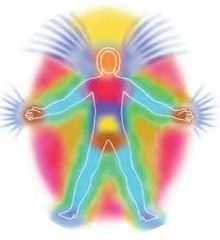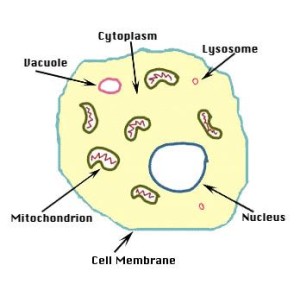There’s an old Eastern story about a group of scientists who set out to climb the Mountain of Truth, where all knowledge is revealed. They scramble to the top of a steep slope, only to see another peak beyond that. They climb the next, only to see yet another even higher. They climb that and… guess what? There’s yet another. Finally, exhausted, they reach the summit of the mountain, only to be greeted by the great spiritual masters and meta-physicians who had been sitting there for centuries!
This is no truer than in the field of healing. Humans have long known how to heal themselves and stay healthy, long before medical science became involved. At some time in the far and distant past, humankind became aware that they could usually do something to help speed their recovery when they became injured or ill (previously, like the animals, a sick or wounded person would simply lie low and wait for recovery to take place). Quite when that was no-one knows, except it was a very long, long time ago. We know from archaeological evidence that purposeful healing activity was taking place at least 50,000 years ago.
This discovery – that we could heal ourselves – was a great step forward in human evolution, and began a process which continues today. It’s an ongoing process a bit like the ratchet effect – two steps forward, one step back.
The determining factor is consciousness. The healing methods used at each stage of our evolution were – indeed could only be – a direct result of the consciousness in which they were administered at the time. The capacity to heal and maintain health and wholeness are always limited by the level of consciousness applied to them. If you think you have an incurable disease, you are probably right. If you think your problem is curable, then you are also probably right. Take tuberculosis (TB) as an example. A few decades ago, mass consciousness dictated that TB was incurable; consequently anyone contracting it died. Today, our healing consciousness has moved on and most TB sufferers make a full recovery. That’s consciousness at work – an ever unfolding process.
What is consciousness?
The word ‘consciousness’ is frequently used but difficult to define. In common usage, the closest equivalent is probably ‘awareness.’ When we are ‘conscious’ of something, we are ‘aware’ of it.
But there’s another definition too – the only thing we know for sure, according to philosopher Peter Russell, it that we have experiences, hence he defines consciousness as ‘the capacity to experience’. This is what Descartes was driving at when he made his famous statement, ‘I think, therefore I am.’
Beyond this we can’t really say, because we can’t measure it, observe it, measure or predict it. Science, baffled by its subjective nature, has tended to ignore it. And yet we can’t deny that it exists, because we all experience things, and we all have awareness. Consciousness has the potential to become any experience we could ever have, even beyond what we are currently capable of imagining. So how do we experience healing? How do we experience illness?
Healing consciousness is about our awareness of the healing process, and what healing could be. But it’s also much more. Because the healing methods used in any society at any point of history tell us a great deal about that society’s view of what a human being actually is and what it means to be human, as we shall see.
In this and the next two blogs I discuss seven levels of consciousness in healing. I’ve chosen seven simply to illustrate my point.
Level one: the mechanic
Even in this, the 21st Century, there are those who think of the human being as a kind of sophisticated robot, a machine with a brain – intelligent perhaps, but a machine nonetheless. So if a part goes wrong, patch it up or take it out and replace it. These are the plumbers, carpenters and mechanics of the medical world.
Now don’t get me wrong: there are times this approach is entirely justified. If a tooth is completely rotten, it needs to come out, because teeth don’t regenerate like, say, a broken bone or damaged liver. It can be replaced with a false tooth or implant which more or less has the saem function as the original.
Cutting, burning, stitching, manipulation, bandages and splints etc. all play a part in healing. But we should always remember, it is not the scalpel, laser, plaster etc. that heal. They only enable whatever does the healing (of which I’ll say more later) to do its work.
Furthermore, techniques based on the body as a mechanical object (such as physiotherapy, osteopathy and so on) have often been very effective in relieving pain and curing a variety of conditions, and not necessarily just the physcial. A century ago, an Australian orator, F.W. Alexander, developed a technique mainly based on breathing, correct posture and movement which is widely taught today. I know from experience that it can be very effective as it helped me relieve a painful foot condition.
Incidentally – that daddy of all medical advances – the heart transplant – has thrown up some interesting issues recently. It is far from a simple physical replacement – there is evidence that some recipients take on the personality of their heart donor. If the heart is merely a physical object, a pump, how can this be?
The fact is, if you experience yourself only as a physical being and your body as nothing more than a mechanical object, your range of healing methods is severely restricted. If anyone tries to tell you that your thoughts and emotions, lifestyle and relationships have anything to do with your health you won’t believe them, and you’ll be very unlikely to consult a practitioner who uses holistic healing methods.
Thankfully not many doctors still think like this, but until the past couple of decades many did. Even so, most haven’t risen much above this level, as we’ll see.
Level two: the naturalist
At some point in history as the growth of healing consciousness proceeded, humans began to notice that ingesting various natural substances or applying them to the skin could have a healing effect. Initially these came from plants, animal parts and minerals found in the natural world. Water, too, was found to have healing properties.
At first, the discovery process was somewhat hit and miss. It was trial and error (mostly error) as humans found that certain natural substances helped with particular health problems. However, they couldn’t cure everything this way because of the limitations of their knowledge.
In recent years, scientific evidence has supported many ‘old wives tales’, and interestingly, today’s hi-tech pharmaceutical companies have progressed little beyond trial and error in much of their research. If you doubt me – find out how Viagra was discovered!
As Western society became more urbanised and industrialised, people were cut off from nature and adopted lifestyles almost guaranteed to produce ill health. But few made the connection.
Level Three: the microbe carrier
Level three/microbe consciousness is a feeling of powerlessness in the face of a potent but invisible enemy.
Not so long ago invisible forces were at work that brought plague and pestilence on a massive scale, and no-one at that time knew why. Then microbes were discovered, and before long were blamed for virtually all illness and disease. Indeed, many still believe that the human being a walking zoo, a repository for the billions of microbes who make their home on and beneath the skin. And to some extent they’re right.
Hence the cosmetic, household chemical and pharmaceutical companies love to frighten us with nightmare vision of deadly microbes, and aren’t we taken in by it? Why else would they constantly regale us with assurances that their brand ‘kills all known germs’ and the like.
The problem is, if we killed all microbes, we’d be dead! There’s no doubt that some germs can cause acute illness, but the fact is most of the microbes that swim around in the human body are harmless, and the vast majority are beneficial. Probiotic yoghurts are big business precisely for this reason.
Allopaths have two main weapons in their armoury for dealing with them – vaccinations and antibiotics. Vaccinations are designed to strengthen the body’s immunity against microbes. Although there is evidence of their use in the Orient two thousand years ago, their rediscovery by Edward Jenner in the 18th century bore all the hallmarks of the scientific method – observation, deduction, testing, verification and so on.
Antibiotics are intended to kill their targeted bacteria stone dead, and can be very effective. But overreliance on them causes more problems than it solves. Firstly, there’s a great deal of evidence that they weaken the natural immune system in the long term (vaccinations do too); secondly, they destroy not only the harmful bacteria, but the beneficial ones too; thirdly (and more scarily) overuse of antibiotics indirectly creates germs that are even more deadly than those they eliminate. Microbes aren’t stupid. When threatened by an antibiotic, they mutate.
So this consciousness that we are merely microbe carriers has a number of problems:
- Most microbes are actually good for us and should not be feared.
- A reasonable standard of hygiene coupled with a healthy immune system deals with most ‘threats’.
- Microbes mutate.
- Commercial interests use them to scare people.
Our current view of microbes will one day be seen as regressive, but meanwhile it suits the purposes of the medical establishment rather well. Consider the swine flu scare of 2008. Fuelled by a consciousness of fear and panic that the world was about to be overrun by killer bugs, governments spent huge sums on anti-flu vaccines. The pharmaceutical companies reaped huge profits, and then it became clear that it was all a storm in a teacup. Many health experts now believe the whole episode to be nothing short of a scandal, and voices in the European Community and elsewhere have even suggested a conspiracy between pharmaceutical companies and the World Health Organisation.
I’ll discuss the next three levels in the next post.
©David Lawrence Preston, 9.5.2016
Follow me on Facebook and Twitter @Feelinggoodatt



Leave a Reply